Time – the core theme of this year’s Investec Cape Town Art Fair – offers us both a threat and a consolation in the same heavy breath: change. Regardless of the happenings beneath it, the sun will rise again, and it will set again. The happenings of the last few years – with so much globally shared grief – certainly do call for some reflection on time, but more so: a celebration of just being here today. Curator of Time’s Labyrinth, Sean O’Toole, writes: “Portraying time is of less interest to me as a curator than being in and of one’s time.”
There’s something profoundly disciplined in not being consumed by the sheer depth history (of art and otherwise) offers. To be in and of this time, with its unique quirks and offerings, is something O’Toole was looking for in the ten artists’ work represented in SOLO. Inspired by the rewarding work of opening one’s eyes to what is happening right now, all around us, take a virtual walk with me through Africa’s largest art fair.
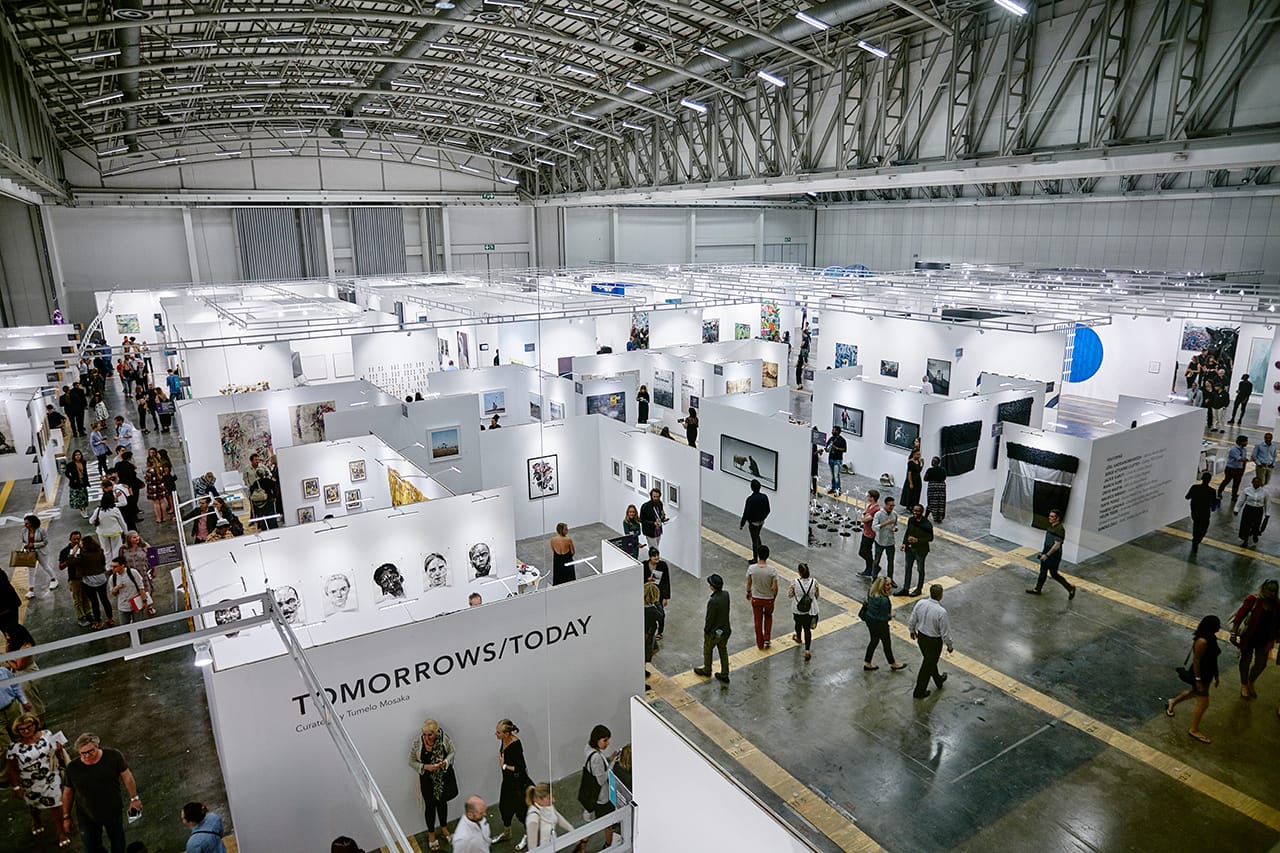
Image courtesy of Investec Cape Town Art Fair
With so many galleries (106 in the main show, to be exact) exhibiting, so much can go under the radar, and feeling so seemingly disconnected from one another. However, if one’s eyes are open to it, there are artists whose work seemed to speak to interconnectedness in thought and practice. In my eyes, these are the patterns of the Investec Cape Town Art Fair.
One of the things most missed on an interpersonal level, was the ability to be physically embraced by the ones we love. A gentle touch or hug from a friend, without fear. In the world of art, where there was a brief period of virtual National Arts Festivals, it is exciting to once again be able to experience artworks in person and up close. Artists took advantage of the spatial relationship by creating texture-driven works, with textures so vivid that the curious body had to restrain itself from reaching out to feel and physically interact with the work.
In the works of Nelsa Guambe (exhibiting under Afriart Gallery), we see Guambe take acrylic paint to repurposed, creased sails. The sails themselves carry the stories of her home country, Mozambique, and the sailors who experienced the raging waters this world has to offer. Across the waters, Julio Rizhi’s work (of Southern Guild) feeds into the feeling that all of these seemingly disconnected parts of the great art conference are in conversation with each other. He uses recycled plastic to create large grotesque masses, bulging and bubbling out through their mesh.
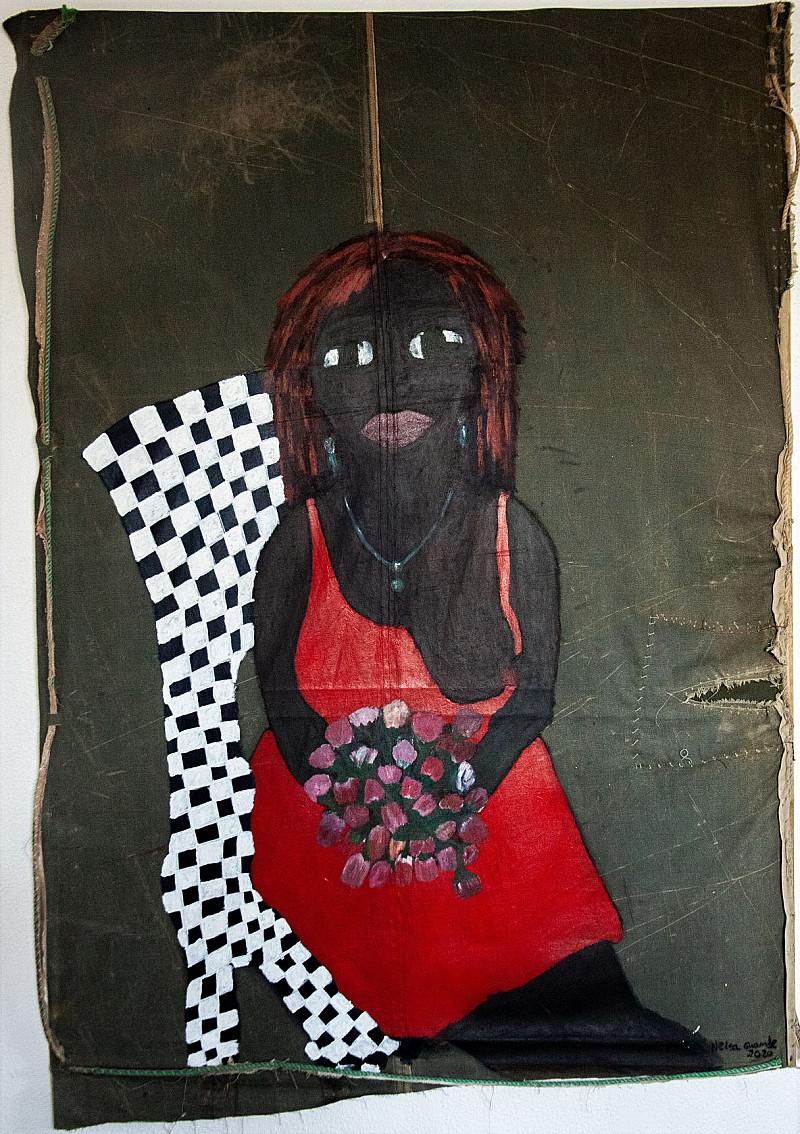
Image courtesy of Afri Art Gallery
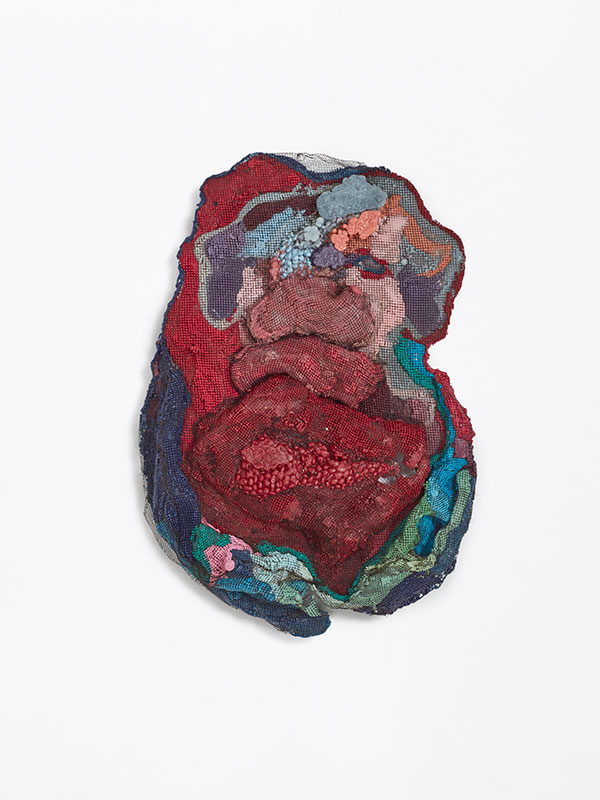
Image courtesy of Southern Guild
Where Guambe’s repurposed sails are a grim reminder of the reverence we ought to give nature, Rizhi’s work in turn is an equally grim reminder of the threat our own manmade disasters are to nature. Chris Soal of WHATIFTHEWORLD abstracts this dynamic of mutual dependence and destruction, with his complex use of toothpicks to create the aptly titled Save Your Own Skin. I wanted to touch and feel these works intimately. To do so would be to become all the more intimate with the dangers of the war raging on outside.
Another thread running through the works was one of family. Many families sat for artists allowing them to create beautiful portraits. An artist who exemplified this marriage between texture and family was Talia Ramkilawan. Ramkilawan won the award for the best booth presentation for her booth entitled ‘Looking at the Same Moon’, presented under BKhz. Working with wool and cloth on Hessian as her vibrant and unique medium of choice, she explored her South African Indian-ness and fluid self-identity. Wedding Day (Savupakyam, Dhaya and Mangathaye), is a glimpse into a pivotal moment in Ramkilawan’s herstory – her grandmother’s wedding.
BKhz offers another family moment with Zandile Tshabalala’s work in the main booth section. Tshablala took us right into the heart of family affairs, with living room furniture to host viewers who’d like to stop by and comfortably get an insight into Umcimbi and other moments of black celebration. At this moment, we are witness to Tshabalala’s own desire to archive frequently unseen moments in black painting history.
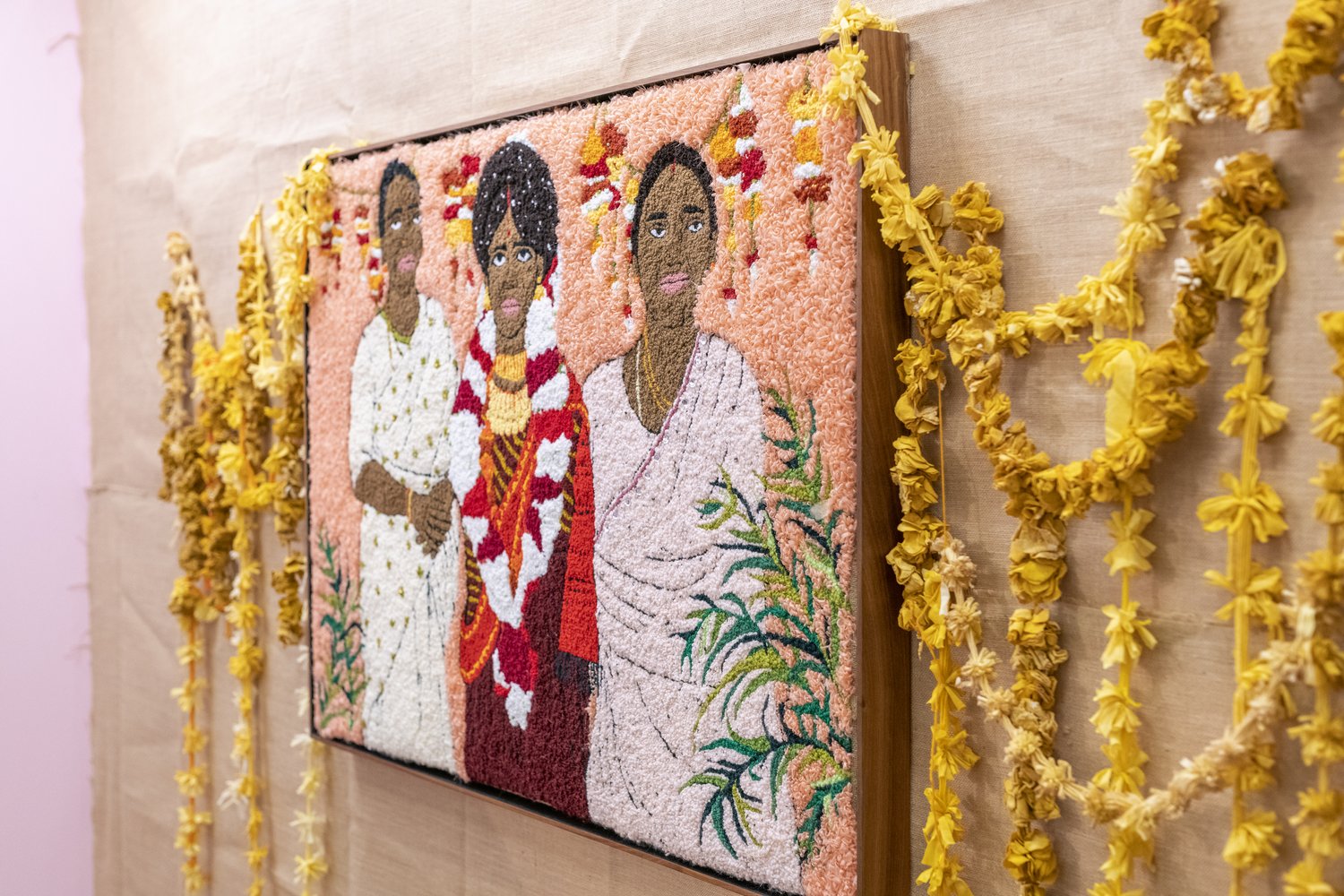

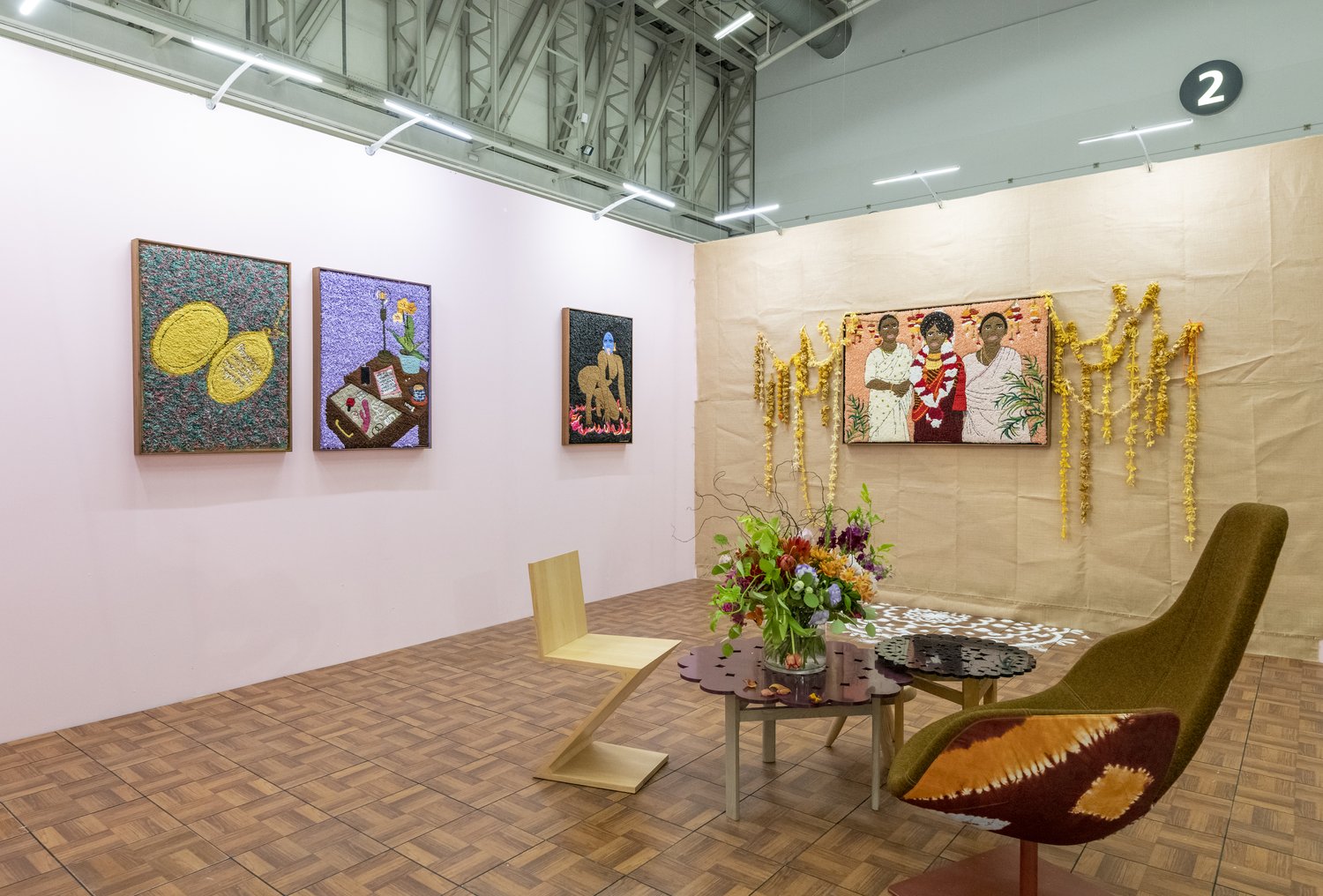
Images courtesy of BKhz gallery
In his own weird-and-wonderful way, Ramazon Can is also invested in archiving moments which threaten to slip away. Having experienced a nomadic childhood, Can is used to time’s ephemeral charm; here today, gone tomorrow. Although not actual family portraits, his display wall in the Anna Laudel exhibition space, and the poses of his human-like figures, are reminiscent of the individual portraits displayed alongside each other of monarchy lineage in the European tradition. He captures these primitive figures who play with anthropomorphism, but places them in esteem, recognising anecdotes of the past whose value seems to be forgotten.
The colour pink has an exceptionally rich history in art. The colour became synonymous with European aristocracy in the 18th century, with the Rococo art movement following soon after as an era dedicated to capturing the air of frivolity the rich carried themselves with (in response to the heavy, darker work of Renaissance and Baroque before). Outside of art, the colour became gendered following World War II, with muted colours being associated with militia and its necessary masculinity. Shortly after, Andy Warhol and his pop art peers reembraced the colour pink, likely for the same reason Rococo did (in response to a darker, recent history).
Northward of our world, the colour pink has lived a whole life, documented extensively. Even in Japan, the colour pink in art was symbolic of brave men who died in wars. But very little literature exists around the colour pink in African art. In the spirit of being here, in the current moment, I cannot avert my eyes from the giant wave that crashes on our African shores, even right here in Cape Town. The wave is pink, and it is unstoppable.

Image courtesy of Goodman Gallery
It washes over the work of Dankyi Mensah (represented by Eclectica Contemporary), pinkwashing the couch on Kumerica: Son of Kumasi. It colours the wall of an intimate moment, in the Dynasty of Love by Olivié Keck of 131 Gallery. Beyond the canvas, pink leaks onto the walls of Cassi Namoda’s Goodman Gallery solo exhibition space.
The Pink Wave is coming, and it’s worth investing in. It is a colour which is deeply political and art-historical. Unlike other colours which get away with just being colours for the most part, this colour fights for and against the gender binary in different parts of history. It carries an entire social class. And now it’s on our shores. Running alongside Cape Town Art Fair, in Johannesburg, rising superstar painter WonderBuhle’s joyous exhibition Kubongwa Okhukhulu Nokuncane was fully submerged in the wave. Similar to Keck, the light shades of pink are placed right beside a loud pattern.
Loud is what we need. Time will continue to run, but African art, the African art market and all its contributors will not be running behind it. If we’re all here, right now, looking and seeing, there’s a conversation being had before our eyes. About touching, about the environment, about family and even about pink and what the colour could mean in our own context.
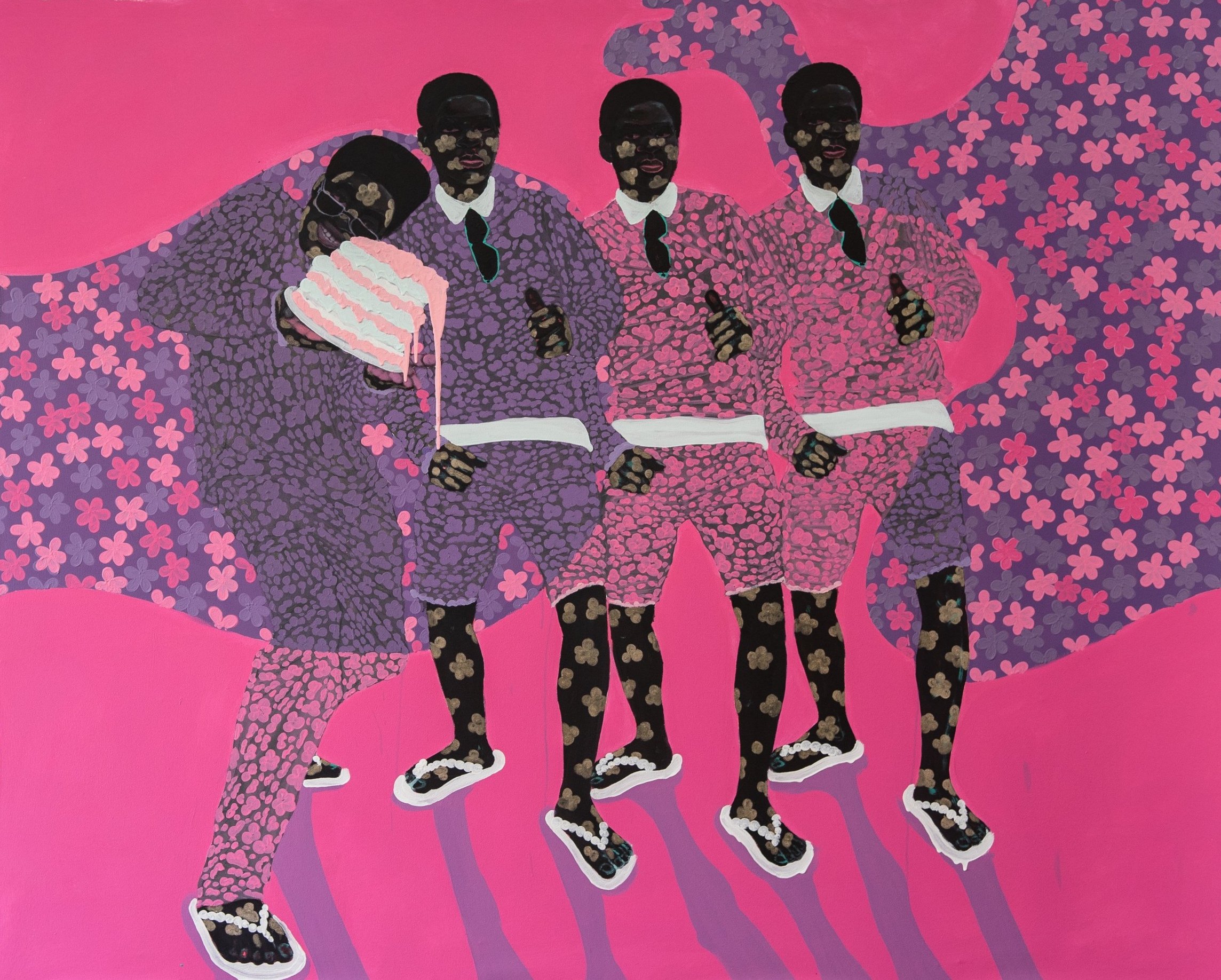
Image courtesy of BKhz gallery



















































